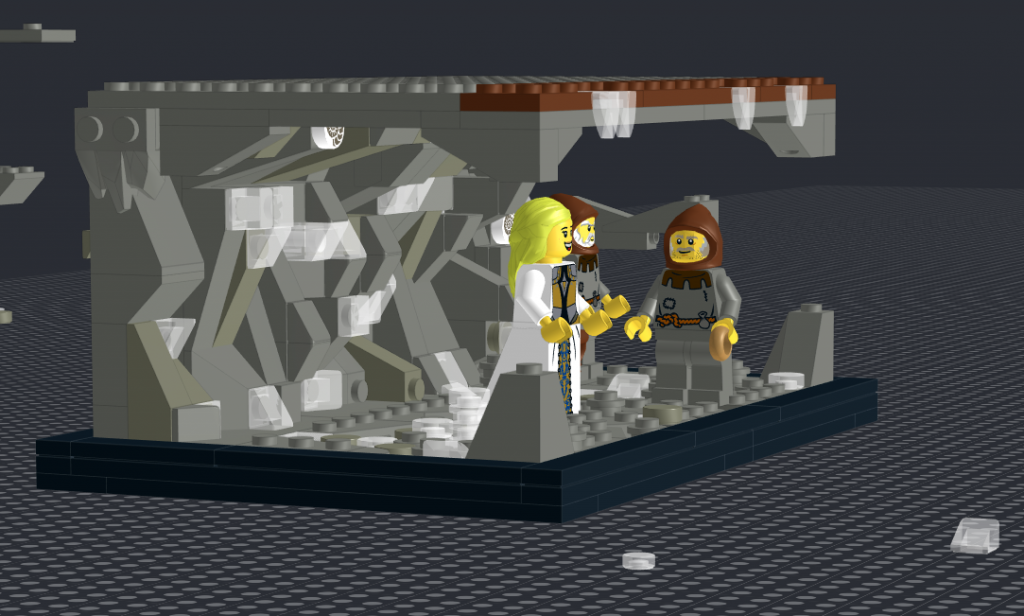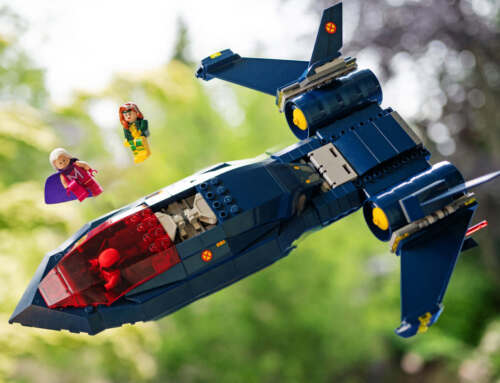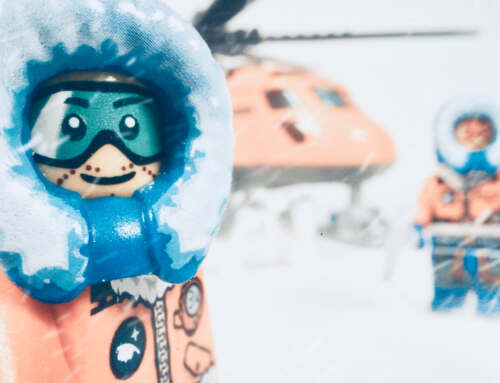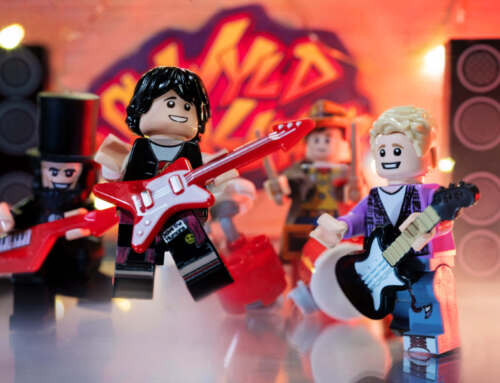Almost every AFOL (Adult Fan of Lego) sooner or later comes across the term MOC (My Own Creation). In short, it means almost every manifestation of original invention when building with LEGO bricks. MOC is actually associated more with impressive robots or breathtaking, epic scenes than with corridors made of several bricks, which, just outside the frame, fall into a chaotic mixture of pieces (yes, it’s also a MOC!).
My own, or not my own? That is the question
Until now, my own creations were limited to such rudimentary, purely practical structures. Sure, I also built a Wall-E from LEGO, but it was based on a photo I saw on the internet. So it must be honestly said that this is not entirely my design.

And since I thought I had neither the skills nor the sufficient number of bricks, I stayed away from real MOCs.
But MOC called for me anyway!
And here goes MOC, with full moc*!
At the end of last year, I came across the initiative of the Polish Lego User Group Zbudujmy.to! (Let’s build it!), entitled ‘Polish Legends’. It looked great – the collab minifig with Polish legends as an inspiration – that’s what Tiggers like best!
So I quickly commented that I am signing up for the next edition. The very next day, however, it turned out that the collab did not end with minifigures. On the contrary, the minifigures were just the beginning, the announcement of “full-length” MOCs! Here is an example of one of such creations, announced only by a minifig.
Ha! I didn’t expect this, but if you said A, you have to say B.
*moc in Polish means force/power
B!
What does AFOL do to build a MOC, but he’s not a MOCer? First, he opens copy of “Hitchhiker’s Guide To The Galaxy” and finds the slogan “don’t panic!”, then he tries desperately to put it into practice.
Next is the idea. In my case it was so much easier that the theme was ready made, you just had to choose the legend. And here fate turned out to be kind, because I quickly made an illustration of the legend of the ring in salt from my hometown Wieliczka.
Everything takes place in the narrow corridor of the salt mine. A mine, like a cave, is rather not very large, is it? Little MOC, so the job will be fast and maybe even simple, I thought.
Yes, you think right. I was wrong.
Further down the spi… the mine
The construction turned out to be not as simple as I expected. Believe me, even the seemingly simple MOC is not simple at all.
Because, unlike real MOCers, I’m not like a dragon and I don’t sleep on piles of LEGO bricks, I decided to design my work in the Stud.io program first. When building with bricks, I definitely prefer the real ones, which can be grabbed and manipulated in any way, often without even thinking. Building in the program lengthens the path between the decision and the implementation of that decision, which makes such a process much less intuitive.
But in program you have an unlimited number of bricks!

Nevertheless, somewhere in the back of my head, I remembered that I would have to buy these parts, so I tried to optimize the whole process. However the brick counter, attached to the program, was ruthless. My eyes widened in surprise at how many bricks I had already used. Of course, it wasn’t visible in my building at all!
Building with… lens
I also noticed that when building, I instinctively did it as if I was setting a scene for a photo shoot. This made it easier to work in the composition area and I could focus on structure and texture design.
I had less experience here, but a bit of inspiration and a lot of support from the members of Zbudujmy.to! helped. These people are really old stager, and at the same time very helpful people who didn’t make me feel that I am a newbie at all. Thanks to their comments and support, this MOC looks much better at every stage of the work than at the very beginning. Although I must honestly admit that I didn’t implement all the remarks, because the budget!

Let’s built it!
And the budget has swollen! As I mentioned Stud.io has a counter of bricks used in the building.
It also has another useful feature: the finished project can be exported to Bricklink marketplace as a parts list. I bought most of the bricks I needed through Bricklink, some from other stores, both online and stationary.
I was waiting impatiently for the delivery of the bricks, because I finally wanted to see the real effect of my efforts. Even the best render [and mine was just a draft! Just look above!] is not able to replace the actual building.
Finally the bricks have arrived! The building process itself was pretty quick and fun, even though I wasn’t strictly sticking to the digital design. But stillI didn’t build from scratch, I didn’t have to look for bricks and wonder how the individual elements would fit into the whole. It was probably the most enjoyable moment in the entire MOC creation process.


Photographing in this case was a formality, because the format of this cooperation assumed that we all photograph our works against a possibly flat background, more in the form of a presentation than an artistic creation. But of course I will definitely make more creative and moody pictures this MOC!

Conclusions
While working on the MOC, I noticed a few critical points.
At the very beginning, I had no idea where to start designing in Stud.io.
I just didn’t know which brick to start with, how to build the base. Here my friends from Zbudujmy.to! came to help. They simply showed me how to build a stand. The second point is the buying bricks stage. It’s worth buying a little more of bricks, if possible. I noticed that several times my concepts changed between the completed digital project stage and the building stage. Also, LUG’s colleagues, at the stage of work in progress, had their comments and suggestions for changes. So if you are participating in a joint venture, it’s worth having a small additional supply of bricks.
And last but not least, never bite more than you can chew. It’s definitely worth starting with a smaller project. It’s much easier to test the entire MOC-creation process on a smaller scale.
Building a MOC is a really fun adventure and a great way to exercise your creativity, imagination and… patience!
Let the MOC be with you!*

*yeah, moc is still force/power in Polish!
Hello! While you’re here, we invite you to sign up to our weekly email roundup where you’ll get a recap of all the week’s babbling. And while you’re at it, you should definitely join our MeWe community! We hold monthly contests with prizes and lots of other cool stuff, too.







Thanks for the insights. I started using a digital program once. I t was a learning curve for sure. I like the organiv nature of what you invented.
Tomasz, I really like what you did here – including the resulting pictures. I think it’s always great to build something just for the purpose of being photographed.
Being of a certain age however, something about MOCs always makes me wonder: For us kids, LEGO heaven was a friend‘s place where they had this huge box filled with bricks. We‘d just pour them on the ground and start building … But I guess we did not have as large a variety of pieces we could choose from which made things way simpler.